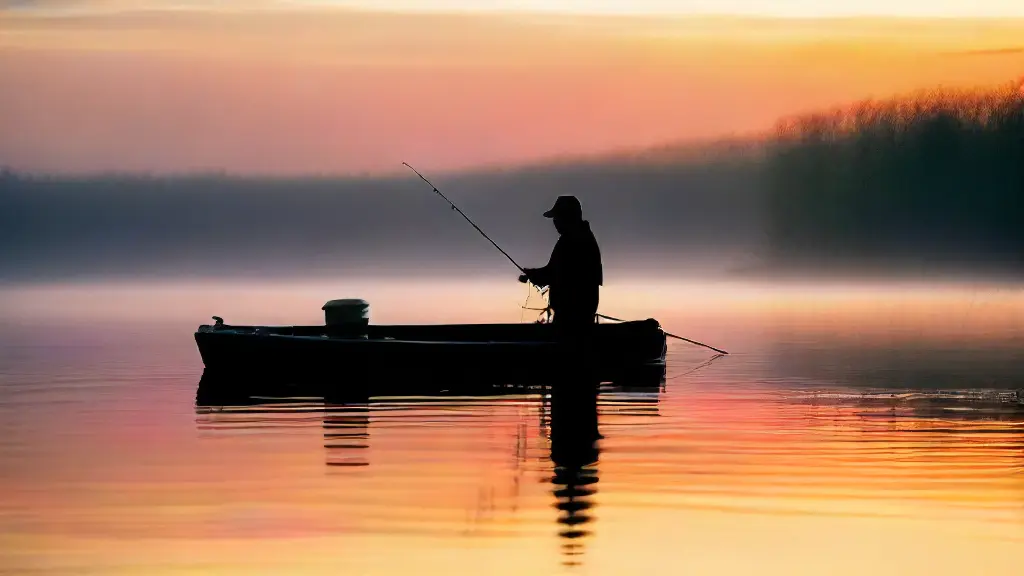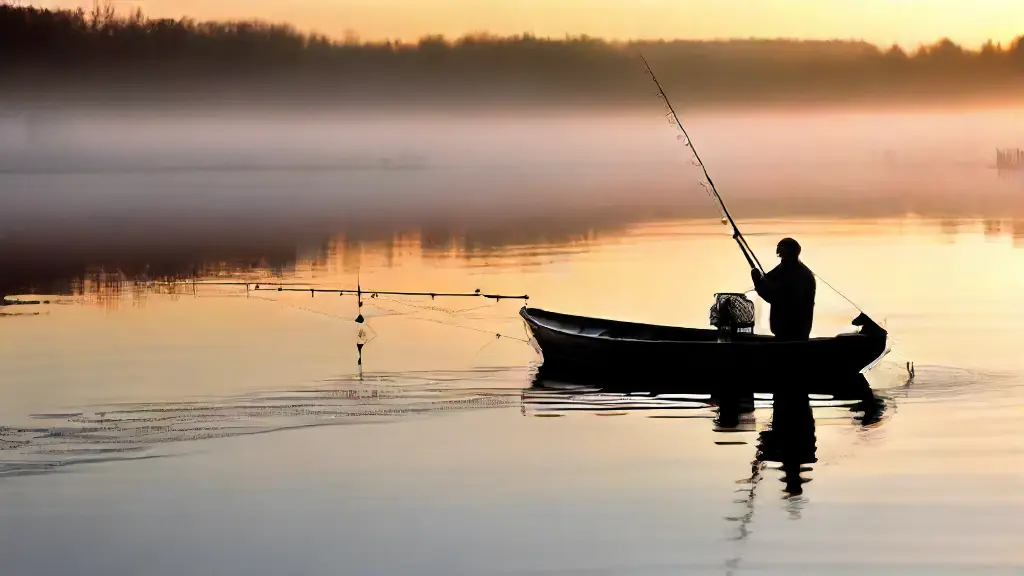Jigging for Muskie: Techniques and Tips

In the depths of North America’s vast freshwater lakes and rivers, a thrill awaits those who dare to venture into the realm of Muskie angling.
Muskie are apex predators that dwell in these bodies of water, making them a sought-after catch for anglers. To increase your chances of reeling them in, you need to employ the right techniques and lures.
Effective lure selection is crucial, as it determines the effectiveness of your presentation.
A well-chosen lure can provoke a Muskie’s natural hunting instinct, enticing them to strike. For instance, when it comes to presenting lures to Muskie, casting and trolling are two popular techniques that can be used to catch these freshwater fish.
How to Select the Right Lure
For many anglers, the thrill of reeling in a muskie is the ultimate fishing experience. Effective lure selection is a crucial aspect of achieving this goal, as it requires an understanding of the fish’s behavior and preferences.
Understanding Muskie Behavior
Muskie patterns and habits are often dictated by their natural environment.
For example, these predators typically dwell in areas with abundant cover, such as submerged structures or vegetation.
Lure Selection Fundamentals
When choosing a lure, weight plays a significant role in triggering a muskie’s strike.
A lure with the right weight can create a subtle vibration in the water, enticing the fish to investigate. For instance, a Rapala crankbait can mimic the movement of injured bait as it sinks or slowly floats back up to the surface, enticing even the most finicky predators to strike.

What is the Best Jigging Technique for Muskie
As the sun rises over the serene lakes and rivers of the north, the gentle lapping of the water against the shore creates a symphony that echoes the rhythmic movement of the water itself. For many anglers, the allure of the mighty Muskie lies not only in their impressive size, but also in the challenge of catching them.
One of the most effective ways to entice these elusive predators is through jigging, a technique that requires a delicate balance of line, sinkers, and pausing to coax them into biting.
Muskie are a type of freshwater fish that inhabit the northern regions of North America.
They are characterized by their large size, with some reaching up to 50 inches in length and weighing up to 30 pounds. Their unique characteristics include a slender body, large mouth, and a mesmerizing green and black striped pattern that helps them blend in with the line, sinkers, and pausing water of lakes, rivers, and ponds, making them expert fish for any fishing technique.
Facts About Muskie Fishing
- Muskie can grow up to 50 inches in length and weigh up to 30 pounds.
- Muskie are characterized by their slender body, large mouth, and mesmerizing green and black striped pattern.
- Jigging is an effective technique for catching Muskie, requiring a delicate balance of line, sinkers, and pausing to coax them into biting.
- Muskie are found in the northern regions of North America, inhabiting lakes, rivers, and ponds.
Presentation Techniques for Effective Jigging
Effective presentations in jigging can make all the difference in landing the big catch. While many anglers focus on the thrill of reeling in a fish, they often overlook the importance of presenting the lure in a way that attracts attention.
When it comes to catching species like Walleye, Pike, and Bass, a well-executed presentation can be the key to success.
Presentation techniques for effective jigging are often misunderstood or overlooked.
We’ll delve into the essential presentation techniques for jigging, focusing on the importance of understanding the different structures and features that game fish like Bass and Panfish occupy.
The first crucial aspect of presentation is the drop.
The rate and depth of the drop are influenced by several key factors, including line size, leader material, and the type of jig being used. Anglers often focus on targeting species such as Walleye, Pike, Bass, and Panfish, but it’s also important to consider Structure, Weedbeds, Rockpiles, Sandbars, and Depth.
How to Time Your Jigging for Muskie
As the dawn breaks, muskies begin their daily quest for sustenance, making it essential to pinpoint the perfect moment to jig for these majestic fish.
Muskie behavior is crucial to understanding when to jig for these elusive fish.
Identifying peak muskie activity periods can make all the difference in a successful fishing trip.
For instance, during the early morning hours, when the water is still, and the sun has just risen, muskie are more likely to be active.
Understanding their behavior also involves reading water conditions to optimize jigging. For example, in areas with high water clarity, muskie are more likely to be found near structure, such as rocks or weeds, where they can ambush prey easily. In contrast, in murky waters, they tend to congregate near current depths.
What Effect Does Water Clarity Have on Jigging
Capturing the perfect cast in open waters requires a deep understanding of the aquatic environment, particularly the clarity of the water. When the water is crystal clear, it’s like having the keys to a treasure chest, as every detail becomes visible, and the excitement of the hunt begins.
Water Clarity’s Impact on Jig Selection
Clear water enables fishermen to effectively use a wide range of jigs, including those that rely on subtle action and precise control.
In contrast, murkier waters often require fishermen to adapt their jig selection and technique to account for the reduced visibility.
Jig movement and action are significantly impacted by water clarity. In clear waters, fishermen can employ a GPS and Sonar combination, utilizing depth readings from the Echo sounder and real-time tracking from the Fish Finder, to navigate their vessel safely with the aid of a VHF radio and a depth-sounder-equipped boat.
How to Identify Good Jigging Spots
As you prepare for a day on the water, excitement builds with thoughts of the elusive muskie lurking beneath the surface of the vessel. There’s no denying the thrill of casting your line into the unknown, hoping to hook onto a monster fish.
But before you even launch your boat, it’s essential to identify good jigging spots to increase your chances of landing the big one.
| Jigging Spots to Consider | Recommended Depths | Fish Attractors to Use | Tips for Success |
|---|---|---|---|
| Rocky Shorelines | 5-15 feet | Crappie minnows | Cast parallel to shore |
| Sand Bars | 10-20 feet | Leeches | Use a slow and steady retrieve |
| Weed Beds | 5-10 feet | Worms | Target areas with dense vegetation |
What Role Does Structure Play in Jigging for Muskie
Fishing for Muskie can be a thrilling experience, but it requires a deep understanding of the terrain and the structures that Muskie inhabit. By analyzing the layout of the water, anglers can pinpoint areas with the perfect combination of cover, depth, and current, drastically increasing their chances of landing a trophy fish.
Structure is the key to successful Muskie fishing, as it provides a sense of security for these powerful fish, allowing them to ambush unsuspecting prey.
Diving deep into the depths of the water, anglers can discover weed beds, rock piles, and sunken logs that offer a sense of security for the fish.
When it comes to jigging for Muskie, sinking a lure to the bottom of the water may be the key to success. By studying the layout of the lake or river, anglers can identify the best places to set their hooks, whether they choose to use a sinking line with a microbarb hookset or a floating line with a braided leader and a fluorocarbon tippet, all of which can help them detect the subtle strike of a biting fish.
How to Use Pausing and Retrieving to Increase Catches
Catching fish requires a deep understanding of their behavior and a keen sense of timing. Techniques like pausing and retrieving can be game-changers for landing elusive catches.
Adapting to the subtle patterns of fish behavior is crucial for landing elusive catches, and that’s where the art of pausing and retrieving comes into play.
The concept of pausing mid-retrieve may seem counterintuitive at first, but it can actually increase the chances of a fish striking.
By pausing your jig, you’re allowing the lure to settle and attract the fish’s attention, making it more likely to bite.
Pausing for Effect:
When pausing, it’s essential to wait for the right moment, as pausing too early or too late can be ineffective. Fish often respond better to slow retrievals and pauses, so it’s crucial to understand their fishing methods and techniques.
Facts About Catching Fish
- Catching fish requires a deep understanding of their behavior and a keen sense of timing.
- Techniques like pausing and retrieving can be game-changers for landing elusive catches.
- Fish often respond better to slow retrievals and pauses.
- Pausing for the right moment is crucial to increase the chances of a fish striking.
Best Rods and Reels for Muskie Lures
Using Sucker Minnows for Muskie


